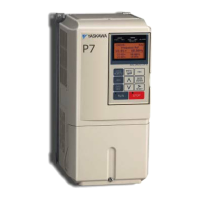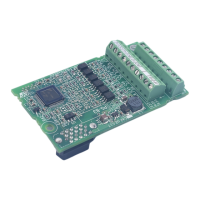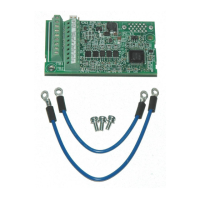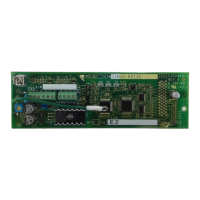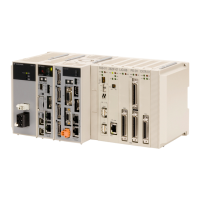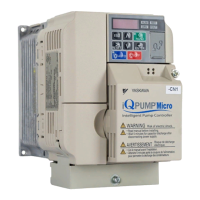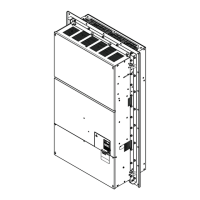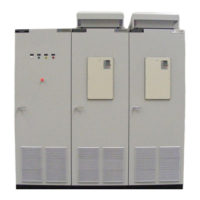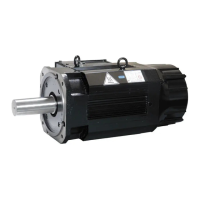Table 5.6 Analog Input Settings for Frequency Reference Using a Current Signal
Terminal
Signal
Level
Parameter Settings
Notes
Signal Level
Selection
Function
Selection
Gain Bias
A2
4 to 20 mA H3-09 = 2
H3-10 = 0
(Frequency Bias)
H3-11 H3-12
Make sure to set jumper S1 on the
terminal board to “I” for current
input.
0 to 20 mA H3-09 = 3
Drive
A1 Analog Input 1
0 or 4 to 20 mA
AC Analog input common
+V
10.5 V, 20 mA power supply
A2 Analog Input 2
A3 Analog Input 3
Jumper S1
A1/A2/A3
Voltage/Current
Selection
V
I
A1 A2 A3
Figure 5.2 Setting the Frequency Reference as a Current Signal to Terminal A2
Switching between Main/Auxiliary Frequency References
The frequency reference input can be switched between the analog terminals A1, A2, and A3 using multi-speed inputs. Refer
to Multi-Step Speed Selection on page 182 for details on using this function.
Setting 2: MEMOBUS/Modbus Communications
This setting requires entering the frequency reference via the RS-485/RS-422 serial communications port (control terminals
R+, R-, S+, S-). Refer to MEMOBUS/Modbus Configuration on page 506 for instructions.
Setting 3: Option card
This setting requires entering the frequency reference via an option board plugged into connector CN5-A on the drive control
board. Consult the option board manual for instructions on integrating the drive with the communication system.
Note: If the frequency reference source is set for Option PCB (b1-01 = 3), but an option board is not installed, an oPE05 operation error will be
displayed on the digital operator and the drive will not run.
Setting 4: Pulse Train Input
This setting requires a pulse train signal to terminal RP to provide the frequency reference. Follow the directions below to
verify that the pulse signal is working properly.
Verifying the Pulse Train is Working Properly
• Set b1-01 to 4 and set H6-01 to 0.
• Set the H6-02 to the pulse train frequency value that equals 100% of the frequency reference.
• Enter a pulse train signal to terminal RP and check for the correct frequency reference on the display.
n
b1-02: Run Command Selection 1
Determines the Run command source 1 in the REMOTE mode.
No. Parameter Name Setting Range Default
b1-02 Run Command Selection 1 0 to 3 1
Setting 0: Operator
This setting will illuminate the LO/RE light to indicate that the Run command source is assigned to the digital operator. Use
the digital operator RUN and STOP keys to start and stop operation.
Setting 1: Control Circuit Terminal
This setting requires entering the Run command via the digital input terminals using one of following sequences:
• 2-Wire sequence 1:
Setting A1-03 to 2220 initializes the drive and presets terminals S1 and S2 to FWD/Stop and REV/Stop. These are the default
settings of the drive. Refer to Setting 40, 41: Forward Run, Reverse Run Command for 2-Wire Sequence on page 212.
5.2 b: Application
148
YASKAWA SIEP YAIP1U 01C AC Drive - P1000 Technical Manual
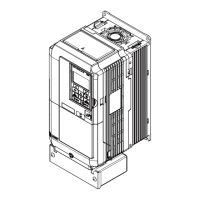
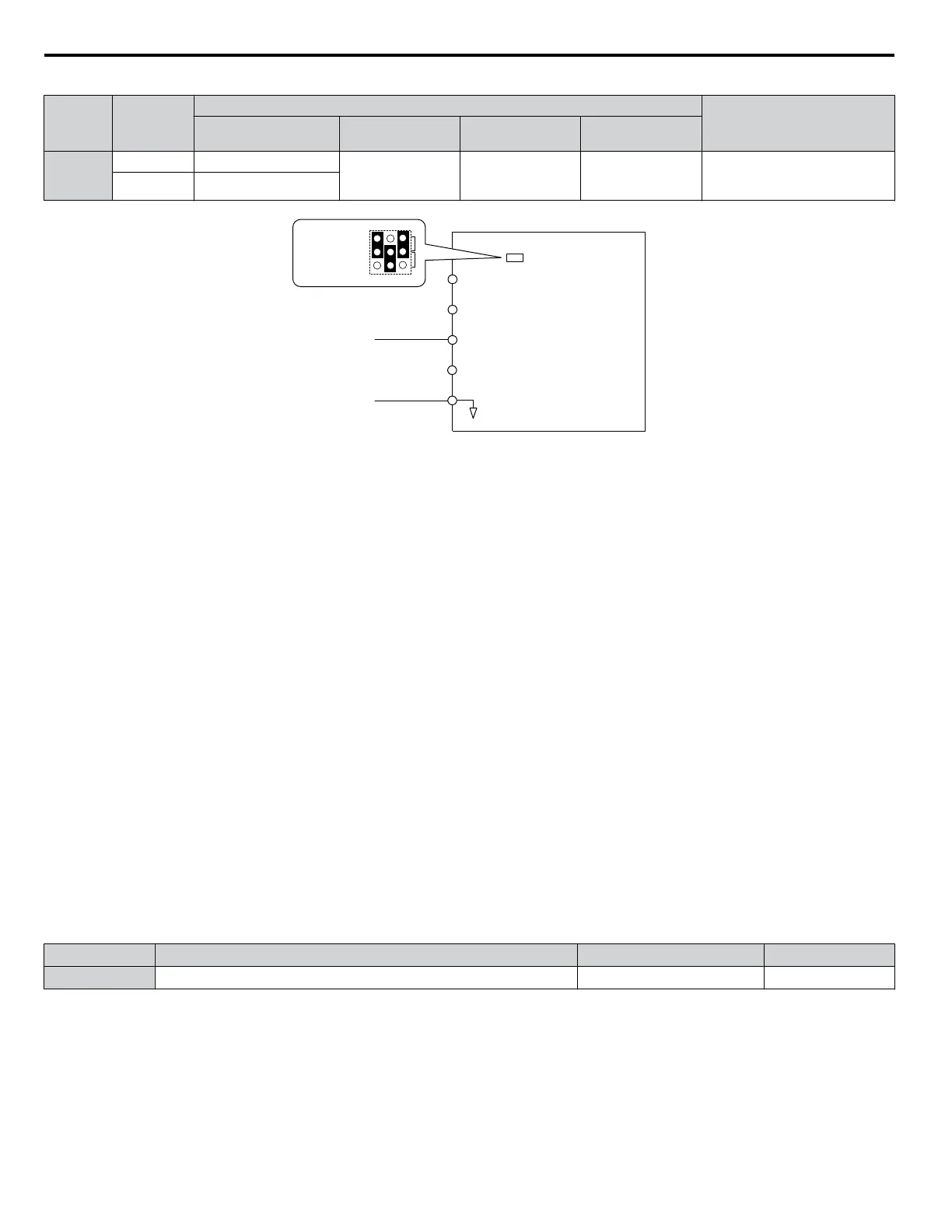